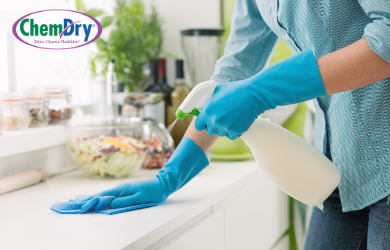Your carpet is exposed to a number of contaminants on a daily basis, especially if you have children or pets in your home or if you enjoy having guests over or hosting events. In an ideal world, your carpet would stay clean and fresh no matter what came its way.
Here’s a brief inventory of just a few of the contaminants that are commonly found in your carpets and rugs.
Pet Urine
Exposure to pet urine is a serious concern for your carpet and the health of your home. As the urine dries, it doesn’t just evaporate into the air. It actually leaves behind urine crystals that cling to carpet fibers and continue to release a noxious odor and a breeding ground for unhealthy bacteria. Without deep cleaning and expert care, you may find the stubborn consequences of a pet accident too difficult to bear.
Everyday Dirt and Soil
Dirt and soil are tracked onto and compacted into your carpet through everyday use. While you can certainly slow this process by having a no-shoes policy in your home, at some point you will begin to notice signs of dirt and soil becoming embedded in your carpet.
One of the most common signs of this process occurring takes the form of traffic lanes. Traffic lanes are easy to identify as they appear with a darker, dingier color and flattened texture in the areas that receive the most foot traffic. Traffic lanes typically start to show up in hallways and doorways. You may also notice that sections of your carpet have more dirt and soil in areas where your children or pets play and rest.
Dust, Dirt, and Other Airborne Particles
Many homeowners do not realize their carpets act as an indoor air filter. When carpeting is at its peak performance, it effectively traps and holds onto airborne dust and dirt. In doing so, carpet helps keep these irritating airborne particles from circulating within your home and dragging down its indoor air quality.
Of course, when too much dust and tiny particles of dirt are compacted within carpet fibers, both the quality of your indoor air and the longevity of your carpets will suffer. Layers of dust can rub against the delicate materials carpets. This friction leads to early signs of wear and tear.
Food Residues and Stains
Food residues represent one of the most frustrating carpet contaminants because they can so easily become stubborn stains. Everything from wine and chocolate to ketchup and grease can pose a threat to your carpets, but this doesn’t mean you should only indulge in your favorite treats within the confines of your kitchen.
Soap Residues and Mold
You may assume that renting a carpet cleaning machine from a local dealer or supermarket is the best way to really deep clean your carpets, but this is far from the truth. Oftentimes, these machines are poorly maintained and difficult to use. Plus, they require the application of a carpet shampoo or detergent, which can be tough, if not impossible, to fully remove from your carpet. Soaps and detergents can leave a sticky, dirt attracting residue, which causes your carpets to get dirty faster. When your carpets are moist for several hours and even days after being cleaned, they offer an inviting environment for the growth of mold. Watch out for cleaning techniques that require long dry times, use soapy, residue-causing detergents, or only provide a surface clean.
You’ll be happiest with a carpet cleaning method that offers deep-clean results and leaves your carpets dry within hours.




